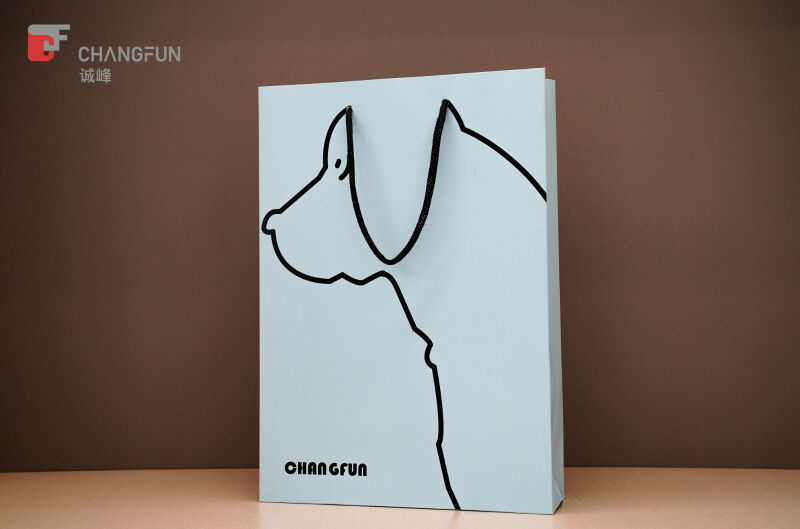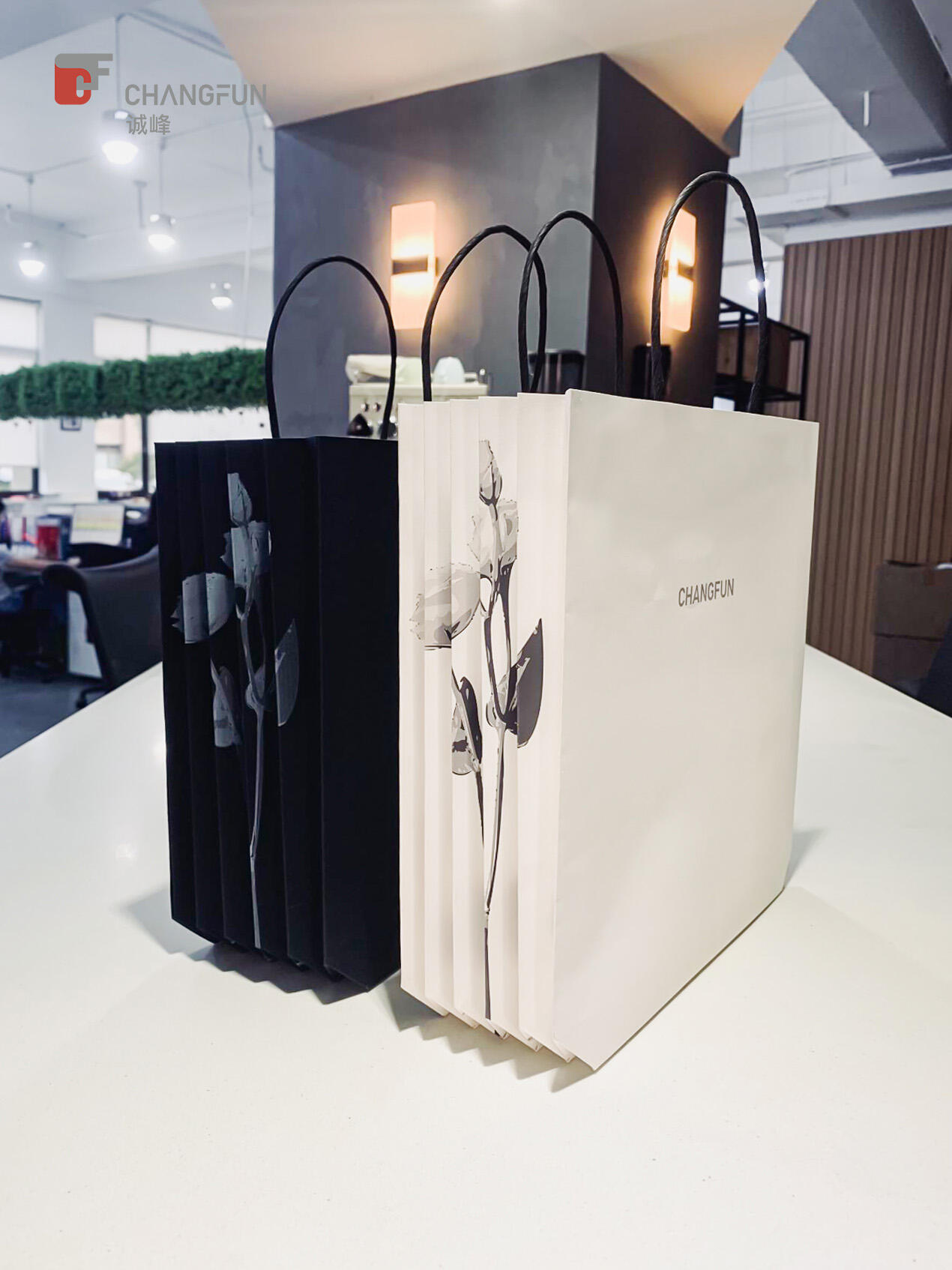
ในโลกของสินค้าหรูหรา ความรู้สึกที่ผู้บริโภคมีต่อผลิตภัณฑ์นั้นมีความสำคัญไม่แพ้ตัวสินค้าเอง ผู้บริโภคที่ลงทุนซื้อสินค้าระดับไฮเอนด์ เช่น เสื้อผ้าจากดีไซเนอร์ จิวเวลรี่ชั้นสูง อาหารระดับพรีเมียม หรืออุปกรณ์อิเล็กทรอนิกส์สุดเอ็กซ์คลูซีฟ ต่างคาดหวังมากกว่าแค่การใช้งานสินค้า พวกเขาต่างคาดการณ์ถึงประสบการณ์ทั้งหมดที่จะได้รับ ประสบการณ์ดังกล่าวมักจะเริ่มต้นไม่ใช่เมื่อใช้งานสินค้า แต่เริ่มต้นเมื่อพวกเขาได้เห็น สัมผัส และแกะกล่องสินค้าเป็นครั้งแรก ด้วยเหตุนี้ การบรรจุภัณฑ์สินค้า การบรรจุภัณฑ์จึงกลายเป็นองค์ประกอบสำคัญของการสร้างแบรนด์สินค้าหรูหรา มันทำหน้าที่เสมือนทูตผู้เงียบงันที่เล่าเรื่องราวของความสง่างาม ความพิเศษเฉพาะกลุ่ม และความประณีตในการผลิตที่แบรนด์นั้นเป็นตัวแทน
ความหรูหรา การบรรจุภัณฑ์สินค้า ก้าวข้ามขีดจำกัดพื้นฐานของการปกป้องและการขนส่ง บรรจุภัณฑ์นี้ถ่ายทอดคุณค่าระดับพรีเมียม สร้างความผูกพันทางอารมณ์ และสร้างความคาดหวัง ตั้งแต่การเลือกใช้วัสดุไปจนถึงรายละเอียดการตกแต่ง ทุกองค์ประกอบของบรรจุภัณฑ์สำหรับสินค้าหรูหราได้รับการพิจารณาอย่างพิถีพิถันเพื่อสร้างความประทับใจไม่รู้ลืมให้กับลูกค้า ท่ามกลางการแข่งขันในตลาดสินค้าหรูหราที่เติบโตอย่างต่อเนื่อง ความเชี่ยวชาญด้านเทคนิคบรรจุภัณฑ์จึงกลายเป็นสิ่งจำเป็นสำหรับการรักษาและเสริมสร้างเอกลักษณ์ของแบรนด์ระดับพรีเมียม
แบรนด์สินค้าหรูให้ความสำคัญอย่างมากกับการบอกเล่าเรื่องราวและความเชื่อมโยงทางอารมณ์ บรรจุภัณฑ์คือจุดสัมผัสทางกายภาพครั้งแรกในเรื่องราวนี้ ต่างจากบรรจุภัณฑ์สำหรับตลาดทั่วไปที่เน้นเรื่องราคาและความมีประสิทธิภาพ บรรจุภัณฑ์สำหรับสินค้าหรูจะเน้นความพิเศษเฉพาะตัว ความงดงามทางศิลปะ และความประณีตบรรจุภัณฑ์ที่เปิดออก (unboxing) มีความสำคัญอย่างยิ่งในภาคส่วนสินค้าหรู เนื่องจากมันเปลี่ยนกิจกรรมง่ายๆ ให้กลายเป็นพิธีกรรมหนึ่ง ย้ำเตือนความรู้สึกของการได้รับการเอาใจใส่และสิทธิพิเศษเฉพาะตัวของผู้บริโภค
บรรจุภัณฑ์ยังทำหน้าที่เป็นตัวแทนทางกายภาพของอัตลักษณ์ของแบรนด์ การเลือกสี ตัวอักษร เครื่องหมาย และลวดลายพื้นผิว ถูกออกแบบมาเพื่อสะท้อนคุณค่าของแบรนด์ กล่องสีดำที่ดูเรียบหรูพร้อมตัวอักษรสีทองที่ปั๊มนูนอาจสื่อถึงความสง่างามและความมีพลัง ในขณะที่ภาชนะทำมือจากไม้บ่งบอกถึงมรดกและความแท้จริง ทุกการตัดสินใจในการออกแบบนั้นสื่อสารสาระสำคัญที่แบรนด์ยึดมั่นไปยังผู้บริโภคโดยไม่ต้องใช้คำพูด
วัสดุเป็นหนึ่งในปัจจัยที่สร้างความแตกต่างได้อย่างแข็งแกร่งที่สุดในบรรจุภัณฑ์ผลิตภัณฑ์หรูหรา บรรจุภัณฑ์ระดับสูงมักใช้วัสดุที่ให้สัมผัสที่ดี มีความทนทาน และมีลักษณะเด่นทางสายตา กระดาษลูกฟูกเกรดพรีเมียม กล่องแข็ง ไม้ หนัง แก้ว และโลหะ เป็นวัสดุที่นิยมใช้ วัสดุแต่ละชนิดสื่อถึงคุณค่าเฉพาะตัวและช่วยย้ำถึงตำแหน่งระดับพรีเมียมของแบรนด์
ตัวอย่างเช่น กล่องแข็งที่มีผนังหนาถูกใช้อย่างแพร่หลายในการบรรจุภัณฑ์น้ำหอม นาฬิกา และเครื่องประดับ น้ำหนักและความแข็งแรงของกล่องสื่อถึงความทนทานและความพิเศษกล่องไม้ที่บุผ้ากำมะหยี่หรือผ้าซาตินมักถูกใช้สำหรับบรรจุภัณฑ์ไวน์ ซิการ์ หรือปากกาหรู ซึ่งให้ความรู้สึกถึงมรดกและฝีมือที่ผ่านการสั่งสมมาแม้แต่บรรจุภัณฑ์ที่ทำจากกระดาษก็สามารถเพิ่มระดับได้ด้วยการใช้กระดาษหนา พื้นผิวที่มีลวดลาย หรือวัสดุรีไซเคิลเกรดหรูที่ผสมผสานระหว่างความยั่งยืนและความสง่างาม
สัมผัสของวัสดุนั้นมีความสำคัญไม่แพ้ด้านทัศน์ ผิวด้านเรียบ สารเคลือบเงา หรือพื้นผิวที่นุ่มลื่นสามารถกระตุ้นการรับรู้ทางประสาทสัมผัสที่ช่วยเสริมสร้างภาพลักษณ์ของคุณภาพ โดยการเลือกวัสดุที่เหมาะสม แบรนด์สินค้าหรูสามารถทำให้บรรจุภัณฑ์กลายเป็นส่วนหนึ่งของประสบการณ์ทางประสาทสัมผัสโดยรวมของผู้บริโภค
การออกแบบบรรจุภัณฑ์สินค้าหรูหราขึ้นอยู่กับความกลมกลืน ความสง่างาม และความประณีต ต่างจากการออกแบบบรรจุภัณฑ์ตลาดมวลชนที่มักใช้ภาพกราฟิกที่โดดเด่นและสีสันสดใสเพื่อดึงดูดความสนใจ โดยบรรจุภัณฑ์ระดับหรูมักเน้นความเรียบง่ายและสงบนิ่ง การใช้สไตล์มินิมอลจึงเป็นที่นิยม ซึ่งเส้นสายที่สะอาด ตัวอักษรที่สมดุล และรายละเอียดที่ละเอียดอ่อน จะช่วยเน้นถึงความพิเศษเฉพาะตัว
จิตวิทยาของสีมีบทบาทสำคัญ สีดำ สีทอง สีเงิน และโทนสีเข้มแบบอัญมณีมักถูกนำมาใช้บ่อย เนื่องจากสามารถกระตุ้นความรู้สึกถึงความสง่างาม ความมั่งคั่ง และพลัง ส่วนสีขาวซึ่งสื่อถึงความบริสุทธิ์และความประณีตนั้นเป็นอีกหนึ่งทางเลือกยอดนิยม อย่างไรก็ตาม การจัดผสมสีต้องสอดคล้องกับอัตลักษณ์โดยรวมของแบรนด์และการวางตำแหน่งสินค้า
การจัดวางตัวอักษรมีความสำคัญไม่แพ้ปัจจัยอื่น ๆ แบรนด์สินค้าหรูมักเลือกใช้ฟอนต์ที่ถูกออกแบบเฉพาะหรือสไตล์ Serif ที่สื่อถึงความเป็นมรดก ความประณีต และความพิเศษเฉพาะตัว โลโก้มักถูกออกแบบให้เป็นแบบนูน (embossed) หรือเว้า (debossed) หรือใช้เทคนิคปั๊มฟอยล์ เพื่อสร้างจุดเด่นอย่างละมุนละม่อม มากกว่าจะเน้นให้โดดเด่นเกินไป ทุกองค์ประกอบทางภาพต้องทำงานร่วมกันเพื่อสร้างความสวยงามที่ลงตัว และช่วยเสริมสร้างเรื่องราวของแบรนด์
บรรจุภัณฑ์สินค้าหรูมักใช้เทคนิคในการตกแต่งเพื่อเพิ่มความน่าสนใจ ตัวอย่างเช่น การปั๊มนูน (embossing) และปั๊มเว้า (debossing) ที่สร้างพื้นผิวที่มีมิติและสัมผัสที่น่าสัมผัส เทคนิคการปั๊มฟอยล์ โดยเฉพาะโทนสี metallic เช่น ทอง เงิน หรือโรสโกลด์ จะช่วยเพิ่มพื้นผิวสะท้อนแสงที่แสดงถึงความสง่างาม ขณะที่การเคลือบเงาเฉพาะจุด (Spot UV coating) จะช่วยเน้นส่วนที่ต้องการให้โดดเด่น สร้างความแตกต่างและเพิ่มมิติของความหรูหรา
การปิดแม่เหล็ก ริบบิ้นสำหรับดึงเปิด และช่องซ่อนของเป็นรายละเอียดที่ทั้งใช้งานได้และให้ความรู้สึกหรูหรา ช่วยยกระดับประสบการณ์ในการแกะกล่องของขวัญ รายละเอียดเหล่านี้สร้างความคาดหวังและความพึงพอใจ ทำให้การเปิดบรรจุภัณฑ์เป็นช่วงเวลาที่น่าจดจำ ในบรรจุภัณฑ์แบรนด์หรู กล่องไม่เพียงแต่ต้องดูสวยงาม แต่ต้องให้สัมผัสที่รู้สึกพิเศษและเหนือระดับเมื่อได้สัมผัส
อีกเทคนิคหนึ่งที่สำคัญคือการปรับแต่งแบบเฉพาะบุคคล การเพิ่มหมายเลขรุ่นลิมิเต็ด การสลักอักษรย่อ หรือชื่อลูกค้าลงไป ช่วยทำให้ผู้บริโภกรู้สึกว่าตนเองเป็นส่วนหนึ่งของประสบการณ์ที่มีเอกสิทธิ์เฉพาะ การออกแบบบรรจุภัณฑ์หรูแบบเฉพาะบุคคลนี้ ช่วยสร้างความผูกพันทางอารมณ์ที่ลึกซึ้งระหว่างแบรนด์และผู้บริโภค ส่งเสริมความภักดีต่อแบรนด์และเพิ่มมูลค่าที่รับรู้

แม้ว่าความหรูหราในอดีตมักจะเน้นความฟุ่มเฟือย แต่ผู้บริโภคระดับไฮเอนด์ในปัจจุบันกลับให้ความสำคัญกับความยั่งยืนมากขึ้น ในปี 2025 และปีต่อไป แบรนด์สินค้าหรูกำลังหันมาใช้บรรจุภัณฑ์ที่เป็นมิตรกับสิ่งแวดล้อม ซึ่งยังคงไว้ซึ่งความสวยงามระดับพรีเมียม พร้อมทั้งสอดคล้องกับหลักความรับผิดชอบต่อสิ่งแวดล้อม วัสดุเช่น กระดาษลูกฟูกที่รีไซเคิลแล้ว พลาสติกที่ย่อยสลายได้ และไม้ที่ได้มาอย่างยั่งยืน กำลังกลายเป็นสิ่งที่พบได้ทั่วไปในบรรจุภัณฑ์สินค้าหรู
แบรนด์ต่างๆ ยังเริ่มหันมาใช้การออกแบบแบบมินิมอลที่ใช้วัสดุน้อยลงโดยไม่ลดทอนความสง่างาม ความท้าทายอยู่ที่การสร้างสมดุลระหว่างความยั่งยืนกับองค์ประกอบของความหรูหรา เช่น น้ำหนัก เนื้อผ้า และความทนทาน ตัวอย่างเช่น กล่องที่มีความแข็งแรงทำจากวัสดุรีไซเคิล สามารถเพิ่มความหรูหราด้วยการตกแต่งที่สง่างาม ซึ่งช่วยคงไว้ซึ่งรูปลักษณ์และความรู้สึกของความพิเศษ ขณะเดียวกันก็ช่วยลดผลกระทบต่อสิ่งแวดล้อม
การเปลี่ยนแปลงนี้สะท้อนไม่เพียงแค่ความต้องการของผู้บริโภค แต่ยังแสดงถึงความรับผิดชอบของแบรนด์ด้วย ผู้บริโภคกลุ่มหรูมักคาดหวังว่าแบรนด์จะเป็นผู้นำที่ให้ตัวอย่างที่ดี และบรรจุภัณฑ์ที่เป็นมิตรต่อสิ่งแวดล้อมยิ่งเสริมสร้างภาพลักษณ์ของความจริงใจและความมุ่งมั่นในระยะยาวต่อคุณภาพ
แบรนด์สินค้าหรูต่างตระหนักว่าการเดินทางของผู้บริโภคนั้นดำเนินต่อไปไกลเกินกว่าการซื้อสินค้า และช่วงเวลาการแกะกล่องสินค้าได้กลายมาเป็นองค์ประกอบหลักของประสบการณ์ความหรูหรา การออกแบบบรรจุภัณฑ์ที่ผ่านการคิดมาอย่างดีจะเปลี่ยนการแกะกล่องให้กลายเป็นพิธีกรรมที่เต็มไปด้วยความคาดหวัง บรรจุภัณฑ์ซ้อนชั้น กระดาษห่อ ตราประทับของแบรนด์ และโน้ตเล็กๆ ที่ซ่อนไว้ สร้างความน่าตื่นเต้นและเรื่องราวให้กับผู้บริโภค
ประสบการณ์เช่นนี้มีพลังอย่างยิ่งในยุคของสื่อสังคมออนไลน์ ซึ่งวิดีโอการแกะกล่องมักได้รับผู้ชมนับล้าน บรรจุภัณฑ์สินค้าหรูที่สร้างผลกระทบทั้งทางสายตาและอารมณ์ในช่วงการแกะกล่องไม่เพียงแต่เพิ่มความพึงพอใจให้ลูกค้า แต่ยังกลายเป็นการตลาดฟรีเมื่อผู้บริโภคแบ่งปันประสบการณ์ของพวกเขาทางออนไลน์
เทคโนโลยีกำลังเข้ามามีบทบาทในบรรจุภัณฑ์ระดับหรู สร้างโอกาสใหม่ ๆ ในการสร้างความสัมพันธ์กับลูกค้า ฟีเจอร์ของบรรจุภัณฑ์อัจฉริยะ เช่น รหัส QR, แท็ก NFC หรือองค์ประกอบความเป็นจริงเสริม (Augmented Reality) ช่วยให้ลูกค้าสามารถเชื่อมต่อกับประสบการณ์ดิจิทัลได้ ตัวอย่างเช่น การสแกนบรรจุภัณฑ์อาจนำไปสู่ทัวร์เสมือนจริงของไร่องุ่น วิดีโอขอบคุณแบบส่วนตัวจากนักออกแบบ หรือการยืนยันความแท้ของนาฬิกาหรู
การผสานรวมเหล่านี้ช่วยเพิ่มความไว้วางใจ สร้างความโปร่งใส และยืดหยุ่นประสบการณ์ของลูกค้าให้เกินเลยไปจากการใช้ผลิตภัณฑ์ทางกายภาพ โดยการผสมผสานองค์ประกอบความหรูหราแบบดั้งเดิมเข้ากับเทคโนโลยีสมัยใหม่ แบรนด์ต่าง ๆ สามารถสร้างสะพานเชื่อมระหว่างมรดกทางวัฒนธรรมกับนวัตกรรม ซึ่งสามารถดึงดูดทั้งกลุ่มผู้บริโภคแบบดั้งเดิมและกลุ่มคนรุ่นใหม่ที่ชื่นชอบสินค้าหรู
บรรจุภัณฑ์สินค้าหรูหราเป็นมากกว่าภาชนะใส่สินค้า มันคือส่วนสำคัญของอัตลักษณ์แบรนด์ ประสบการณ์ของผู้บริโภค และการสร้างจุดต่างในตลาด จากวัสดุระดับพรีเมียมและการออกแบบที่ประณีต ไปจนถึงเทคนิคการตกแต่งขั้นสุดท้าย การปรับแต่งให้เป็นส่วนตัว และความยั่งยืน ทุกแง่มุมมีส่วนช่วยให้เกิดภาพลักษณ์ของแบรนด์ที่ชัดเจน ในตลาดพรีเมียมที่การแข่งขันสูงและผู้บริโภคมีความพิถีพิถันสูง บรรจุภัณฑ์จึงเป็นเครื่องมือในการบอกเล่าเรื่องราว สร้างความผูกพันทางอารมณ์ และสร้างมูลค่า
เมื่อแนวโน้มเปลี่ยนไป แบรนด์สินค้าหรูที่สามารถนำแนวคิดเรื่องความยั่งยืน การปรับแต่งให้เป็นส่วนตัว และเทคโนโลยีมาใช้ พร้อมทั้งรักษารูปแบบอันสง่างามแบบไร้กาลเวลา จะสามารถเสริมความแข็งแกร่งให้กับตำแหน่งของตนในตลาดได้ บรรจุภัณฑ์จะยังคงมีบทบาทหลักในการสร้างแบรนด์ระดับพรีเมียม เปลี่ยนสินค้าให้กลายเป็นประสบการณ์ และสร้างความประทับใจที่ยาวนาน ซึ่งช่วยเสริมสร้างความภักดีต่อแบรนด์และเพิ่มยอดขาย
เนื่องจากบรรจุภัณฑ์เป็นสิ่งแรกที่ผู้บริโภคมีปฏิสัมพันธ์ทางกายภาพกับแบรนด์ จึงกำหนดความคาดหวัง และสื่อถึงความพิเศษ ความมีคุณภาพ และเอกลักษณ์ของแบรนด์
กระดาษแข็งไม้อัด ไม้ หนัง สัตว์ แก้ว และโลหะ มักใช้ร่วมกับวัสดุผ้ากำมะหยี่ หนังกลับ หรือกระดาษที่มีลวดลายพิเศษเพื่อเพิ่มคุณค่า
บรรจุภัณฑ์สินค้าหรูหราเน้นความเรียบง่าย สงวนท่าที และสง่างาม ในขณะที่บรรจุภัณฑ์สินค้าตลาดทั่วไปมักใช้สีสันสดใสและลวดลายกราฟิกเพื่อดึงดูดความสนใจอย่างรวดเร็ว
การปั๊มฟอยล์ การนูน การบุ๋ม การพิมพ์สปอตยูวี ตัวล็อกแม่เหล็ก และสายรัดเป็นเทคนิคที่นิยมใช้ในบรรจุภัณฑ์สินค้าหรูหราเพื่อเพิ่มความประณีตและเอกสิทธิ์
ได้ ปัจจุบันแบรนด์ต่างๆ หันมาใช้วัสดุรีไซเคิลและเป็นมิตรกับสิ่งแวดล้อมมากขึ้น พร้อมทั้งรักษาความสวยงามระดับพรีเมียมเพื่อตอบสนองความคาดหวังของผู้บริโภคในเรื่องความยั่งยืน
ประสบการณ์การแกะกล่องที่ได้รับการออกแบบมาเป็นอย่างดีสามารถสร้างความคาดหวังและความประทับใจ ช่วยย้ำคุณค่าของแบรนด์ และกระตุ้นให้ลูกค้าแบ่งปันประสบการณ์ของตนผ่านช่องทางออนไลน์
มีความสำคัญ เนื่องจากสัมผัสส่วนตัว เช่น อักษรย่อ หมายเลขรุ่นจำกัด หรือชื่อลูกค้า ช่วยเพิ่มความพิเศษเฉพาะตัวและความผูกพันทางอารมณ์
คุณสมบัติของบรรจุภัณฑ์อัจฉริยะ เช่น รหัส QR NFC และความเป็นจริงเสริม (AR) ช่วยเชื่อมโยงบรรจุภัณฑ์ทางกายภาพเข้ากับเนื้อหาดิจิทัล ช่วยเพิ่มการมีส่วนร่วมของลูกค้า
ได้ เนื่องจากบรรจุภัณฑ์ระดับพรีเมียมช่วยย้ำภาพลักษณ์ของคุณค่า ความพิเศษเฉพาะตัว และฝีมือการผลิต ทำให้แบรนด์สามารถกำหนดราคาสินค้าในระดับที่สูงขึ้นได้
ความยั่งยืน การผสานรวมเทคโนโลยี ความเป็นส่วนตัว และประสบการณ์การแกะกล่องแบบอินเทอร์แอคทีฟ จะยังคงมีบทบาทสำคัญในการกำหนดทิศทางบรรจุภัณฑ์หรูในอีกไม่กี่ปีข้างหน้า